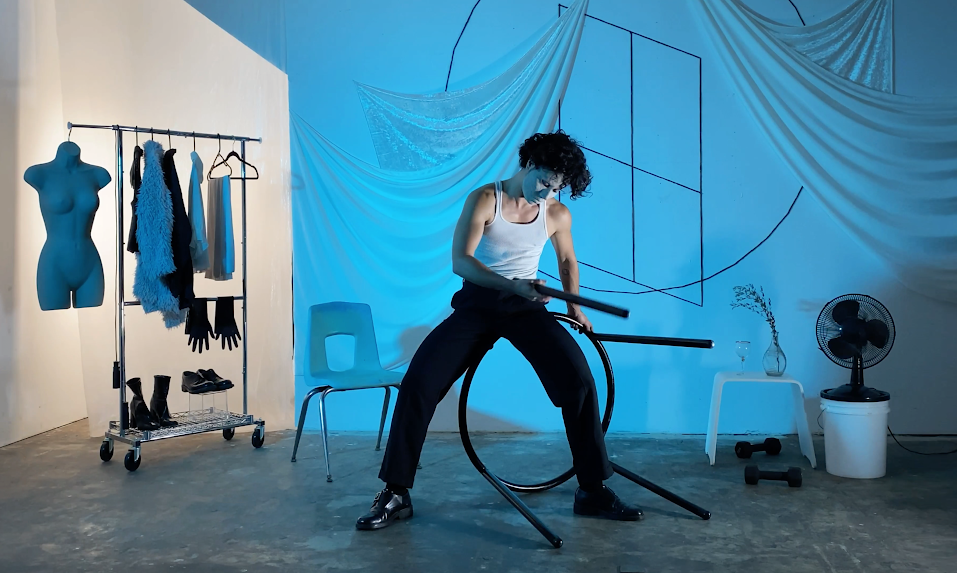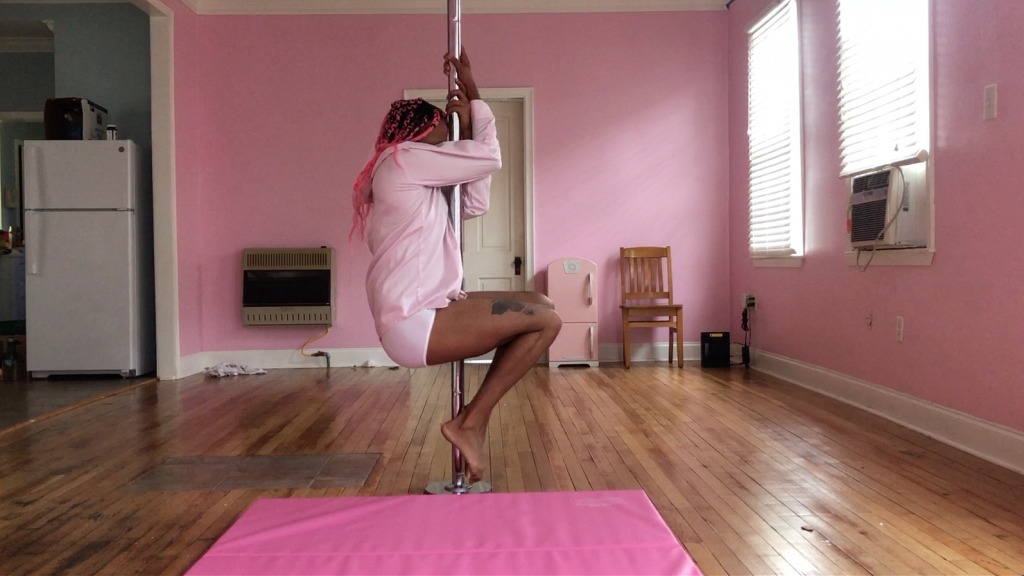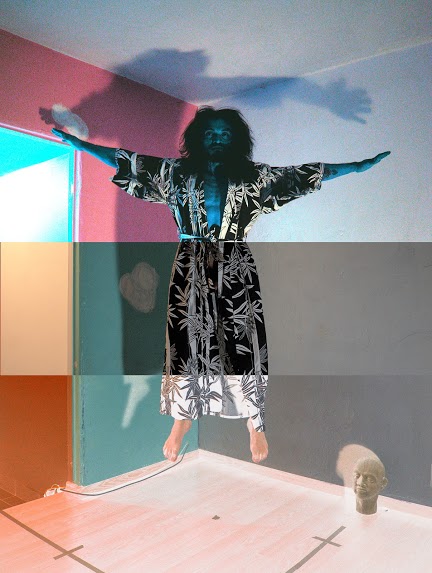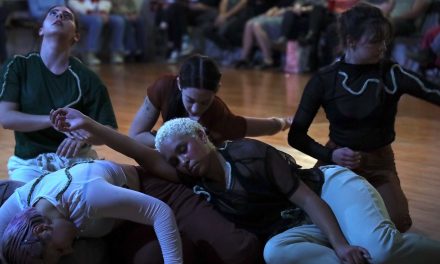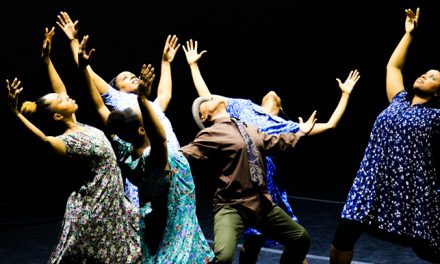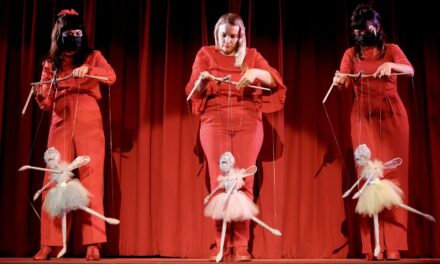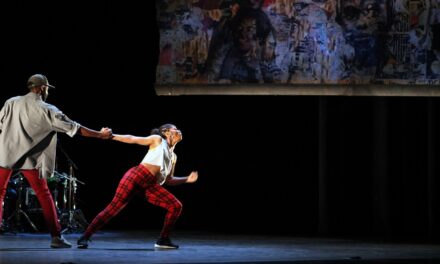On January 12th Highways Performance Space and Gallery opened its second annual Film Maudit 2.0 Festival with the premiere of Hi-Kicks Entrails, as part of its Behold! Queer Performance Program. Hi-Kicks Entrails runs through January 24, 2021. The entire Film Maudit 2.0 Festival features over 125 works of cinema from 25 countries and includes films that are rarely ever seen during other festivals. The films take on subjects of social and political issues that are considered by some as offensive, and other that confront conformist and sexual traditions or mores. Kudos to Ironstone and Highways for providing a platform for these talented artists to present their work.
Hi-Kick Entrails features five unique films by LGBTQI artists Ironstone, Cade, josie j, Travis D, and Jordi. Another artist who, due to a family tragedy, was unable to present their film was Ya Dwsk (They/Them). They did, however, contribute their thoughts on the project’s criteria during the Q&A. Our thoughts and good wishes go out to Dwsk and their family.
In the several dictionaries, the definition of the word maudit is cursed, damned, or wretched. Along with many others, these are adjectives far too often used to describe members of the LGBTQI community, and it was inspiring to view the work of five talented artists who are openly gay, gender nonconforming or transgender. The curator of Hi-Kicks Entrails was the dancer, choreographer, performer, and filmmaker known as Ironstone; whose provocative evening-length work I Share the Body was presented last December at Highways. This is a young artist/activist with much to offer and I look forward to following his career.
As part of Hi-Kicks Entrails description, it stated: “Dance is the breath made visible. 6 Dancers tackle the scariest thing known to humanity: the body. Endless compounding horrors organized into rhythm mean it’s not just about the body, it’s about what you say with it. How is Dance not just about the body and how can that be recorded? Films with questions about process, progress, and posture.” Four of the five films shown accomplished the creator’s vision whereas one succumbed to the temptations of special effects.
Jordi (she/her) describes herself as “a gender non-conforming, Afrofuturistic, multidimensional artist weaving healing energy into my works for myself and others to evolve”. Her film SoLali (run time 20 mins.) is a remarkable film that is poetic, sensual, and graphic while making use of everyday, sometimes mundane activities. Checking the temperature of a shower before stepping into bathe, raking leaves, digging a hole to plant a tree, or painting a wall. Some of her chores are sped up, giving us a distorted sense of time while adding to Jordi’s belief that everything is dance. At that speed, it does look like she is dancing with the rake, the plant and the paint brush.
The sensuality did not come during the scene where Jordi stood nude in front of her tub, but in the final scene where she films herself performing at home on a medal pole and several pink mats. Dressed in white briefs and dress shirt, Jordi stands on her head, rubs her crotch against the pole and performs as a sensual pole dancer. We see the movement run in reverse which gives Jordi’s movement an eeriness that I am not sure she meant. Liquid from a drink goes back into the bottle as she consumes it, her long braids move in “unnatural” ways. This process messes with movement and time while also adding a diverse layer of emotions.
I was struck by the music score composed and performed by Jordi, and inspired by the wisdom of her spoken words. SoLali makes one think, question, and yes, smile.
I’d Rather Have a Daughter in a Whorehouse Than a Son in the Police Force 2020 is a short video (run time 5 mins.) by visual and performance artist Travis D (they/them) whose face we never quite see in the film. Instead, Travis D dons several masks and wigs, altering their movement and attitude with every costume and venue change. In the film they discuss the difficulty of coping with cultural norms and all the layers created by them. They state that one must “rid oneself of norms to find oneself under all those layers”.
Travis D’s film definitely investigates the search for self. It is at times confrontational, whimsical, and even scary. Who exactly is this artist? Perhaps the answer is found in the totality of the many personalities laid out before us in this fast paced perplexing, and enjoyable film.
Travis D was assisted in the making of I’d Rather Have a Daughter in a Whorehouse Than a Son in the Police Force 2020 by Dalton Chase Goulette
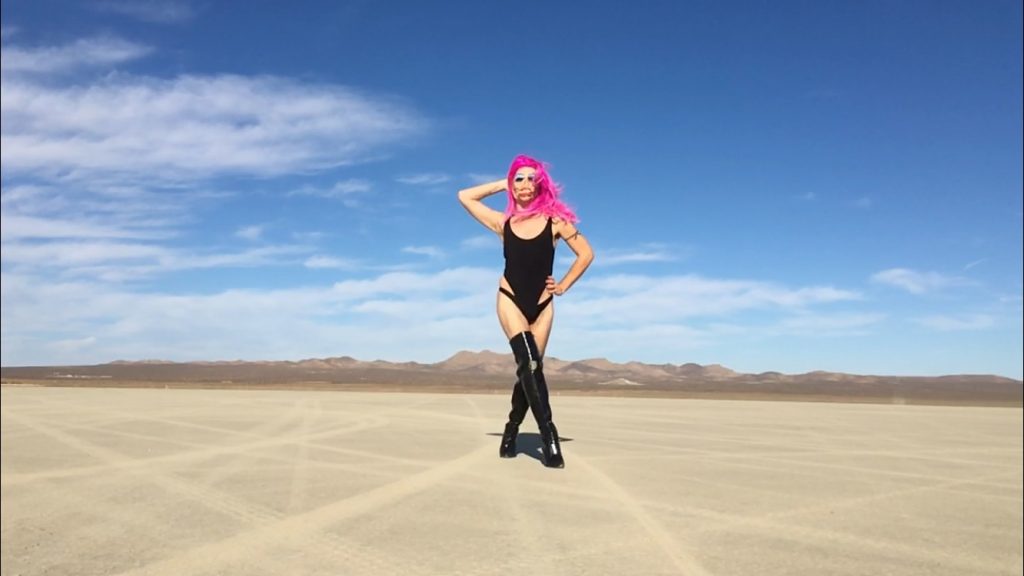
Still from “I’d Rather Have a Daughter in a Whorehouse Than a Son in the Police Force 2020” by Travis D – Courtesy of the artist.
Boogaloo Baby by filmmaker/performance artist josie j is an example of when time seems extended. The film is only 10 minutes in length but feels far longer. I went back to the website to confirm the listed run time. The artist’s mistake, in my opinion, is that he took on too many subjects and depended far too much on the special effects, some of which were absolutely wonderful. Example, in one scene a garage door opens to reveal a film within a film and different elements cascade down the driveway. Aside from the film’s meaning, it is a feast of visuals.
I did enjoy host of the images and special effects that josie j manages to produce in Boogaloo Baby, but any central theme was lost on me. Social unrest, gentrification, over population, and more is hinted at but not deeply explored. During the Q&A he seemed unable to clearly articulate his vision or clarify his beliefs. Perhaps this is josie j’s next project; to bring his ideass into focus. The potential is definitely there.
an Impossible Task with a capital D (Run time 6 mins.) is by Ironstone and Sung. It is not Ironstone’s strongest work, but it is an intriguing and thought evoking film. We are shifted back and forth between the surreal and the mundane. Costumed in a blue/grey hooded leotard and burgundy jazz pants, Ironstone moves around in mid-air against a harsh orange image of his face. This section slices into a street scene with a man (Ironstone?) wearing a patchwork skirt standing over another man seated on the sidewalk leaning against a gated storefront. Their activity appears uncertain; sex, drugs, homeless?. This hint of male-to-male attraction ends abruptly to reveal Ironstone quietly performing on the railing of a concrete stairwell. As he moves we hear a voice questioning what dance is or could be.
an Impossible Task with a capital D is a film that plays tricks on one’s mind. Did the film end, is this three films in one? The answer is yes, maybe and no. The film was conceived by Sung and Ironstone, directed by Sung and Ironstone, the Videographer was Sung, and the Wardrobe was by Patria. The dancers were Sung, Ironstone, and Patria; spoken word by Patria and Sung; Sound by Ironstone and Music by Crook.
Cade is a transgender story-teller whose art bridges video, poetry, sculpture and performance. In his film, Das Ding (The Thing) [run time 10 mins.], Cade uses silent movie-era illustrations, some of which crossfade into reality; a drawing of a nude man stretched out in a chair becomes the flesh and blood Cade.
We are taken through a series of scenes drenched in vivid colors that become surreal at times. Cade uses household items to create stark sculptures and draped fabric on the walls dance in the wind created off camera. We see Cade lying on a bed with a tadpole swimming in the hollow of his chest. While wearing a stylized pasty mask, Cade slowly dismantles a black modern-style table giving it multiple purposes – a support, a portal and a hanging picture frame. We do not experience the dismantling, it just is.
Das Ding was written and directed by Cade with sound mixing and original music by Precious Child. Assistant cinematographers were Jordan Rennert and Antonio Zamora. Cade writes in his artist statement: “The part of my body I am aware of today are the hollows which my anatomy surrounds. Beneath the roof of my mouth, within the ventricles of my heart, and across the tight tunnel on the intersection of my thighs. I fool these voids, I fill them.”
Das Ding is a very personal investigation into Cade’s sexuality, body image and much, much more. It is philosophical, eerie and magical, with a message that is both overt and disguised. It is a work worth watching again and again.
Other artists who performed during musical interludes of the Q&A session were Paris Hurley from Object as Subject and musician/vocalist Mx. Matías.
Hi-Kicks Entails runs now through January 24, 2021. To purchase tickets, click HERE.
To visit Highways’ Maudit 2.0 Festival website, click HERE.
To learn more about Highway Performance Space and Gallery, click HERE.
Written by Jeff Slayton for LA Dance Chronicle.
Featured image: Still from Das Ding by Cade – Courtesy of the artist.

